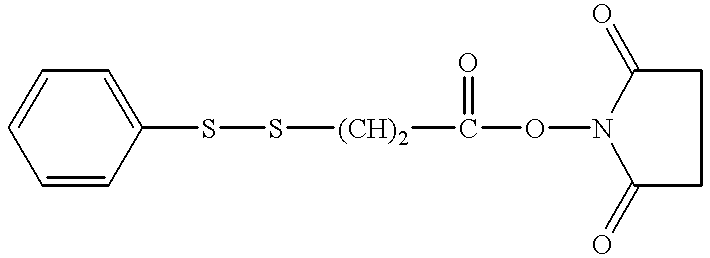Receptor-mediated gene transfer system for targeting tumor gene therapy
- Summary
- Abstract
- Description
- Claims
- Application Information
AI Technical Summary
Benefits of technology
Problems solved by technology
Method used
Image
Examples
example 1
1. Example 1
Synthesis of Oligopeptide E5
Oligopeptide E5 was synthesized with solid phase peptide synthesizer(ABI 430) according to protocols from the manufacturer.
1.1. Oligopeptides were synthesized by chemical methods using solid phase peptide-synthesizer(ABI 430). The PAM amino acid resins were used as carrier-resin provided by ABI. The amino acid resin used for each reaction was 0.5 mmol, and amino acid 2 mmol. Amino acids were added sequentially according to the amino acid sequence of oligopeptide E5.
1.2. Cleavage of resin after synthesis of oligopeptide-resin in solid phase was carried out by utilizing 1 ml trifluoromethyl sulfonic acid (TFMSA) and 10% trifluoroacetic acid (TFA), stirred at room temperature for 2 hr. the crude product (about 300-350 mg) was precipitated with 250 ml anhydrous ethylether after removal of resin by filtration.
1.3. Desalting of the crude product was performed by Sephadex G10 column chromatography, eluted with 0.1 N glacial acetic acid. The first pea...
example 2
2. Example 2
Synthesis of Oligopeptide GE7
All procedures were same as Example 1 except that amino acids were sequentially added according to the peptide sequence of oligopeptide GE7.
example 3
3. Example 3
Synthesis of Oligopeptide GV1 and GV2
All procedures were same as Example 1 except that amino acids were sequentially added according to the peptide sequence of oligopeptide GV1 and GV2.
PUM
| Property | Measurement | Unit |
|---|---|---|
| Volume | aaaaa | aaaaa |
| Volume | aaaaa | aaaaa |
| Volume | aaaaa | aaaaa |
Abstract
Description
Claims
Application Information
 Login to View More
Login to View More - R&D
- Intellectual Property
- Life Sciences
- Materials
- Tech Scout
- Unparalleled Data Quality
- Higher Quality Content
- 60% Fewer Hallucinations
Browse by: Latest US Patents, China's latest patents, Technical Efficacy Thesaurus, Application Domain, Technology Topic, Popular Technical Reports.
© 2025 PatSnap. All rights reserved.Legal|Privacy policy|Modern Slavery Act Transparency Statement|Sitemap|About US| Contact US: help@patsnap.com



